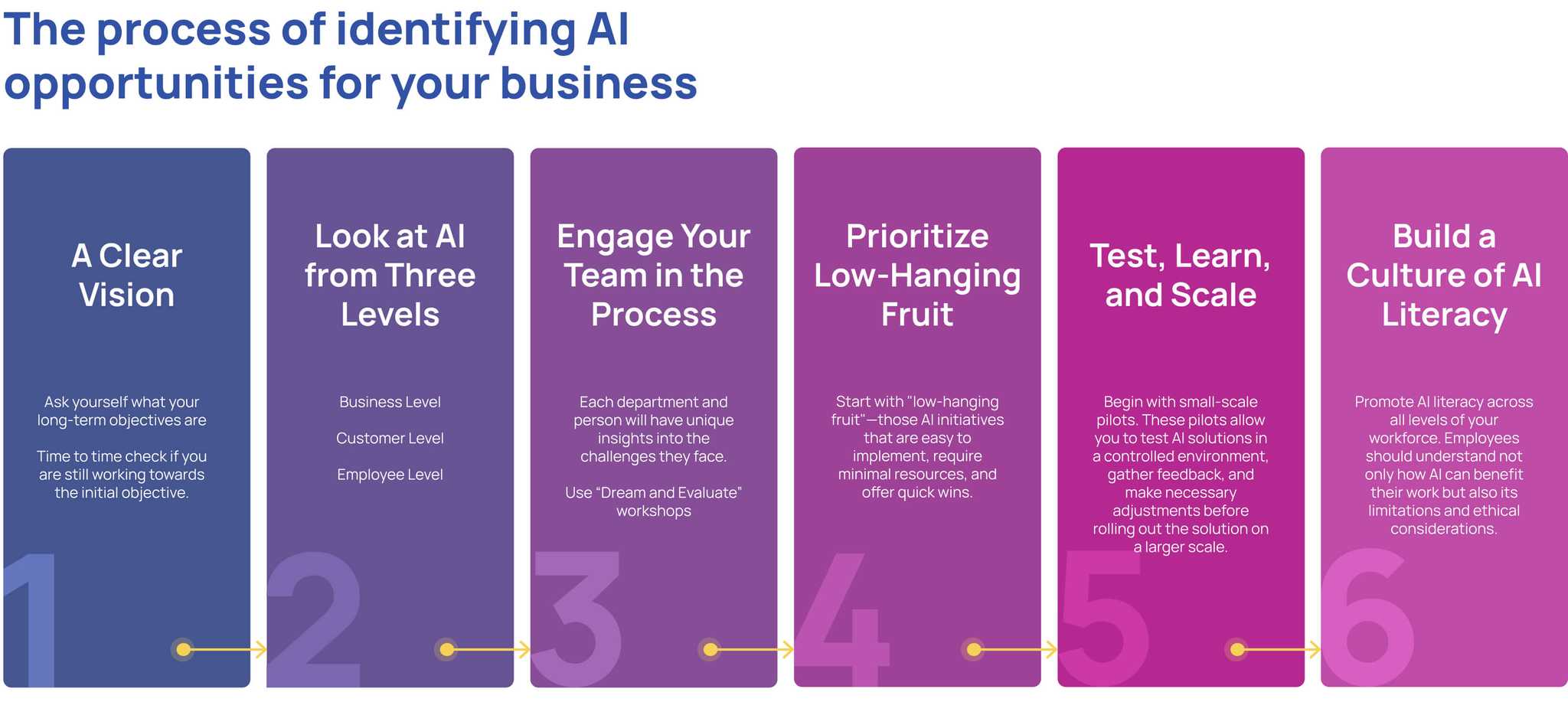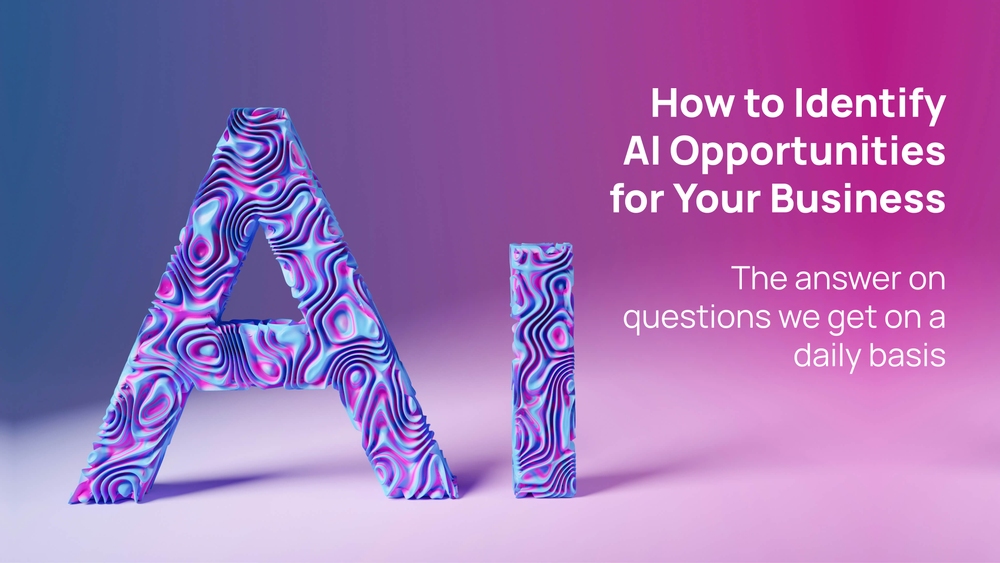
1. Start with a Clear Vision
Before you can effectively identify AI opportunities, you need a clear understanding of what you want to achieve. AI is not a magic bullet that solves all problems; it needs to be aligned with your business goals. Ask yourself what your long-term objectives are: Do you want to improve operational efficiency? Enhance customer experiences? Innovate with new products or services? Having a clear vision will guide you in identifying the right AI use cases that align with your broader business strategy.
2. Look at AI from Three Levels
AI can impact your business in many ways, but it's essential to break down these opportunities into three levels: business, customer, and employee.
- Business Level: Focus on processes that directly affect your profits, revenue, and growth. This could involve automating supply chain management, optimizing pricing strategies, or predicting market trends using AI.
- Customer Level: Consider how AI can enhance your products, services, and overall customer experience. This might include using AI to provide personalized recommendations, improve customer service with chatbots, or analyze customer feedback to better understand their needs.
- Employee Level: Look at how AI can streamline your operational workflows and improve the day-to-day experience of your employees. For example, AI can automate repetitive tasks, freeing up your team to focus on more strategic activities, or help in analyzing data to make better decisions faster.
While these levels often overlap—improvements in one area can lead to benefits in another—it's important to evaluate them individually to ensure you're addressing specific needs without expecting immediate, widespread ripple effects.
3. Engage Your Team in the Process
Identifying AI opportunities isn't a one-person job. It requires input from across your organization. Engage teams from different departments—such as operations, customer service, marketing, and IT—to gather a diverse range of perspectives. Each department will have unique insights into the challenges they face and how AI could help solve them.
One effective method is to organize a "Dream and Evaluate" workshop. In the first session, encourage participants to brainstorm AI ideas without constraints. This creative session is about thinking big and exploring all possibilities. The second session should then focus on evaluating these ideas based on feasibility, budget, and potential impact, resulting in a prioritized list of AI projects.
4. Prioritize Low-Hanging Fruit
Once you have a list of potential AI projects, it's time to prioritize. Start with "low-hanging fruit"—those AI initiatives that are easy to implement, require minimal resources, and offer quick wins. These projects are ideal for testing the waters, building confidence in AI, and demonstrating its value to your organization.
For example, automating incoming customer support communications with a chatbot is a manageable project that can show immediate benefits in terms of efficiency and customer satisfaction. By starting small, you can build a solid foundation for more ambitious AI projects down the road.
5. Test, Learn, and Scale
After prioritizing your AI projects, begin with small-scale pilots. These pilots allow you to test AI solutions in a controlled environment, gather feedback, and make necessary adjustments before rolling out the solution on a larger scale. This approach reduces risk and increases the likelihood of success.
Remember, AI implementation is an ongoing process. It's essential to continuously monitor the performance of your AI systems, refine them based on new data and insights, and remain adaptable to evolving business needs.
6. Build a Culture of AI Literacy
For AI to be truly effective, it must be integrated into the culture of your organization. This means promoting AI literacy across all levels of your workforce. Employees should understand not only how AI can benefit their work but also its limitations and ethical considerations. Investing in training and creating open channels for discussion about AI will help ensure a smooth transition and maximize the value AI can bring.
7. Think Long-Term but Act Incrementally
While it's crucial to have a long-term vision for AI in your business, it's equally important to act incrementally. Start with projects that are reachable, achievable, and measurable. Success in these smaller initiatives will build your team's experience and confidence, allowing you to tackle more complex AI challenges in the future.

